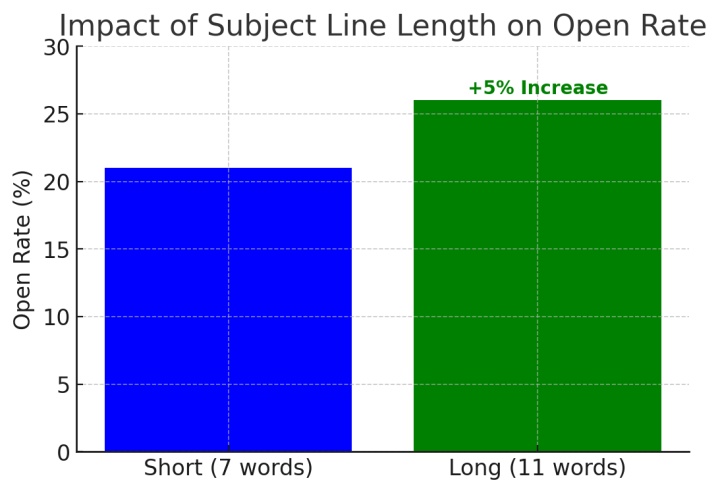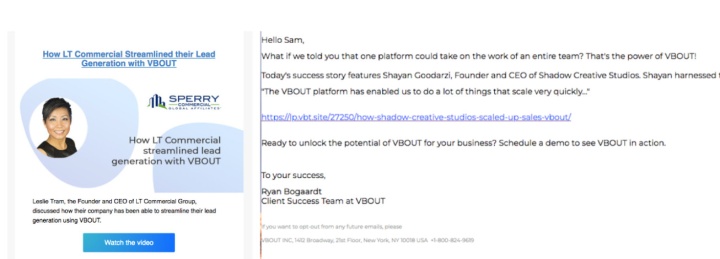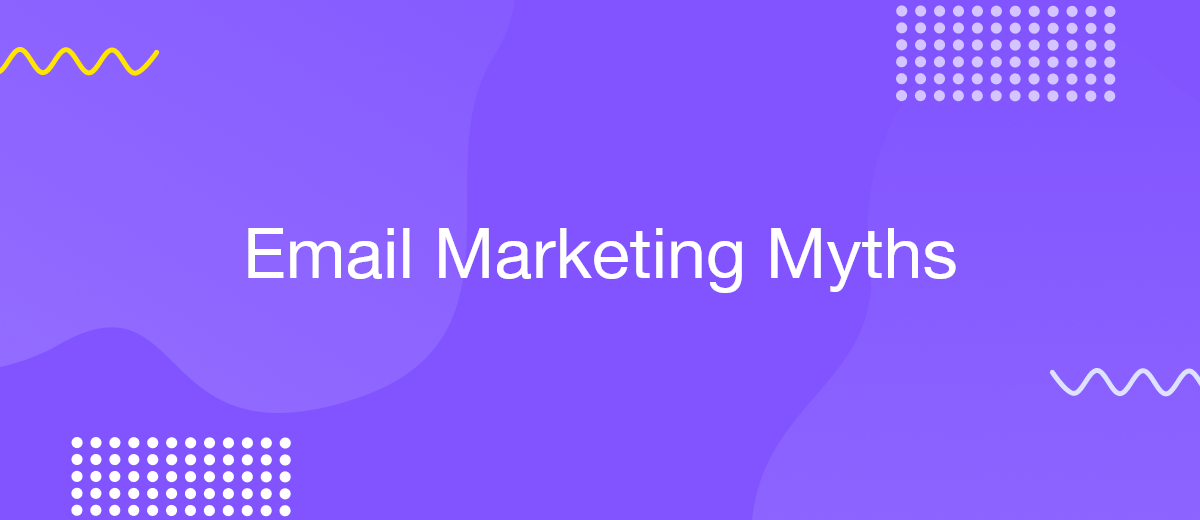9 Common Email Marketing Myths You Should Stop Believing
Email marketing is one of the most effective digital marketing strategies, yet many businesses fall victim to myths that limit their success. Whether it's misconceptions about frequency, content length, or the best time to send, these myths can prevent you from optimizing your campaigns. In this article, we'll debunk nine common email marketing myths and provide insights to help you get better results without falling into common traps.
Myth #1: Don’t Send the Same Email Twice
Definitely, you should send emails in a way that doesn’t bother your subscribers, but who said you cannot send the same email twice? As you know, not all your subscribers are going to open or engage with your emails. Some of them might have missed your email in their inbox, while others may not have had time to check it due to a busy schedule. Regardless, resending your email to those who didn’t open it the first time can be a good opportunity to engage them again. This ensures they don’t miss important content and keeps them active.
For instance, Forbes managed to reach 54.7% more people by resending the same email to their recipients compared to the original send.
To avoid appearing repetitive, make small tweaks to the subject line, preheader, and content to keep the email fresh.
Myth #2: Unsubscribes Are Always a Bad Thing
It might seem negative when someone unsubscribes from your emails, but in reality, it can be beneficial. Besides allowing recipients the freedom to opt out if they no longer find your emails relevant, which aligns with CAN-SPAM laws, unsubscribes help maintain a healthy, engaged list of contacts who are truly interested in your brand.
While a high unsubscribe rate should be a warning sign, keeping your list engaged with segmented, relevant content will reduce unnecessary opt-outs and improve overall email performance.
This table provides a breakdown of unsubscribe rates by industry in 2025, helping you maintain a rate that aligns with industry benchmarks.
| Industry | Unsubscribe Rate (%) |
|---|---|
| Advertising and marketing | 0.2 |
| Agriculture, forestry, fishing, and hunting | 0.2 |
| Automotive and aerospace | 0.2 |
| Beauty and personal care | 0.3 |
| Construction, contracting, manufacturing | 0.3 |
| Consumer packaged goods | 0.1 |
| eCommerce | 0.27 |
| Education | 0.2 |
| Engineering, architecture, design | 0.2 |
| Financial services | 0.2 |
| Food and beverage | 0.1 |
| Government | 0.2 |
| Health and fitness | 0.4 |
| Healthcare | 0.2 |
| Insurance | 0.25 |
| IT, tech, software services | 0.2 |
Myth #3: Short Subject Lines Always Perform Better
Subject lines are the first thing subscribers see, making them crucial in influencing open rates. Many marketers assume that shorter subject lines always perform better, but this isn’t always true. While short subject lines can be direct and effective, longer subject lines can provide additional context and attract engagement depending on your audience and messaging.
At VBOUT, we generally use subject lines of fewer than 10 words. However, after conducting A/B tests, we noticed that longer subject lines sometimes outperformed shorter ones. For example, in one campaign:
- Subject Line A: "Transform Your Social Media Strategy with AI!" (7 words)
- Subject Line B: "Power Up Your Posts: Our AI Social Media Assistant is Here!" (11 words)
The longer subject line (B) resulted in a 26% open rate compared to 21% for the shorter one.

The takeaway? Test different lengths to see what works best for your audience.
Myth #4: Inactive Subscribers Should Be Ignored
Many marketers neglect inactive subscribers, assuming they’re a lost cause. However, ignoring them can harm your email performance. A large number of inactive subscribers lowers your open rates, which can negatively impact your sender reputation and lead to emails being marked as spam.
Instead of ignoring them, segment your inactive subscribers and send them a re-engagement campaign. Remind them why they signed up, share valuable content they may have missed, and offer incentives to re-engage. If they still don’t respond, tag them as dormant and keep them separate to maintain list health.
Myth #5: Long-Form Emails Should Be Avoided
Many marketers assume that because people have short attention spans, emails should always be brief. While concise emails can be effective, long-form emails have their place, especially when you need to explain a topic in depth, tell a story, or present a compelling offer.
- Automate the work of an online store or landing
- Empower through integration
- Don't spend money on programmers and integrators
- Save time by automating routine tasks
Similar to subject lines, email length should align with your goals and audience. If you’re introducing a complex product or addressing common challenges before presenting a solution, a longer email may be necessary. What matters is creating engaging, relevant content that provides value to your audience.
Myth #6: There’s One Best Day and Time to Send Emails
Marketers often try to identify the perfect day and time to send emails, but there is no universal answer. The best time to send emails varies by industry, audience, and even location.
The key is to analyze your email performance and identify patterns in your audience's engagement behavior. One effective way to optimize send times is through predictive sending, which uses machine learning to determine when each recipient is most likely to open an email.
For example, some businesses reported a 13% increase in open rates by using predictive sending rather than relying on general best practices.
Myth #7: Simple Text Emails Don’t Perform Well
Many marketers believe plain text emails are ineffective, but that’s not entirely true. While HTML emails are great for newsletters, product announcements, and event invitations, plain text emails offer their own advantages.
Plain or simple text emails feel more personal, have a better chance of bypassing spam filters, and often receive higher response rates for one-on-one communication. HTML emails, on the other hand, are excellent for branding and engagement tracking. The most effective email strategies use both formats—choosing the right one based on the message and audience.
Here’s a screenshot of the difference between both emails, showing the HTML email on the left and simple text email on the right.

Myth #8: List Quantity Matters More Than Quality
Having a large email list may seem beneficial, but quality matters far more than quantity. Building a list through ethical means, such as opt-in forms and landing pages, ensures you attract engaged subscribers who are really interested in your content.
Once you’ve built your list, maintaining its quality is essential. Regularly clean your email list by removing invalid addresses and hard bounces, and segment inactive contacts for targeted re-engagement campaigns. Avoid purchasing email lists, as they contain unqualified contacts and can damage your sender reputation.
You can automatically update your mailing lists through integrations. To achieve this, you can use systems such as ApiX-Drive. This tool enables quick configuration of connections between email services and third-party systems (e.g., CRMs, messaging apps, ads accounts), ensuring that contacts are automatically added or updated.
Myth #9: Personalization is Just About Using the Recipient’s First Name
Many marketers think that personalization is only about adding a subscriber’s first name to an email. While this can be a good starting point, a successful personalization goes far beyond that.
An effective personalization consists of writing content based on the lead’s behavior, preferences and previous interactions. This includes sending recommendations based on their purchase history, segmenting lists according to the subscriber’s interests, and using dynamic content to make emails more relevant.
For example, instead of a generic “Hey [First Name], check out our new products!”, a well-personalized email might highlight products similar to ones the recipient has previously viewed or purchased.
The key takeaway? Personalization should be meaningful, not just a simple name insert. Tapping into behavioral data and segmentation will lead to better engagement and conversion rates.
Conclusion
Email marketing success isn’t about following generic rules; it’s about understanding your audience, testing different strategies, and continuously optimizing. By debunking these myths, you can improve engagement, maintain a healthy list, and get better results from your email campaigns. Focus on what works for your specific audience rather than blindly following outdated advice, and you’ll see real growth in your email marketing efforts.
Remember that using ApiX-Drive online connector, you can automate processes on your own without any coding or special skills required. Be sure to check out step-by-step guides to set up the integrations:


